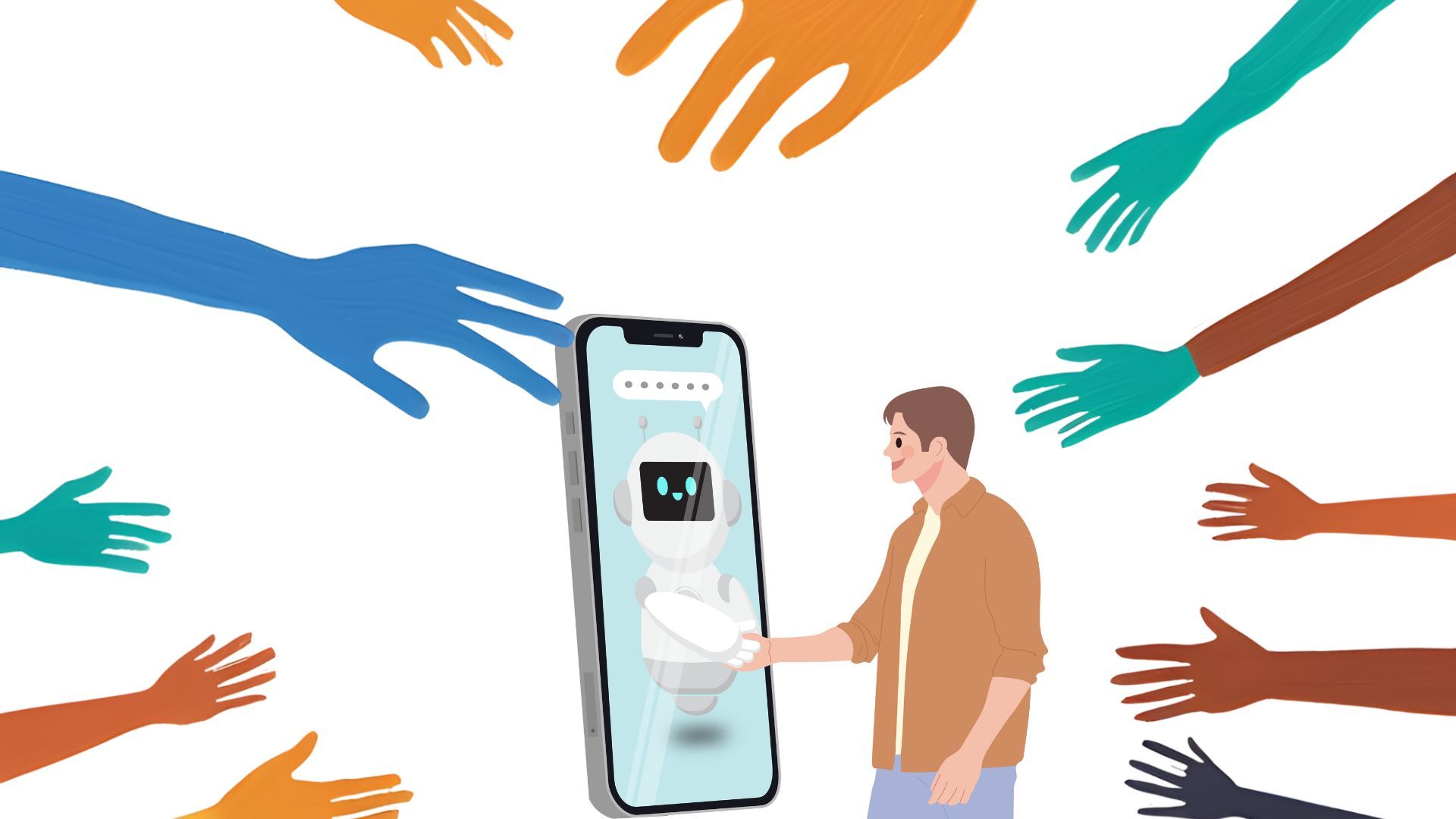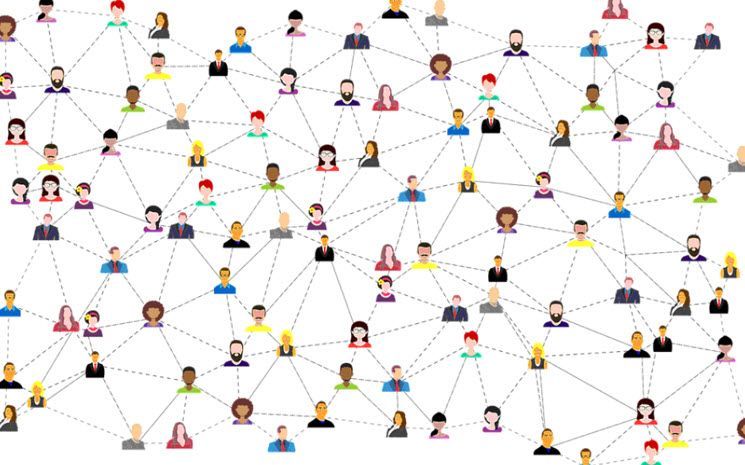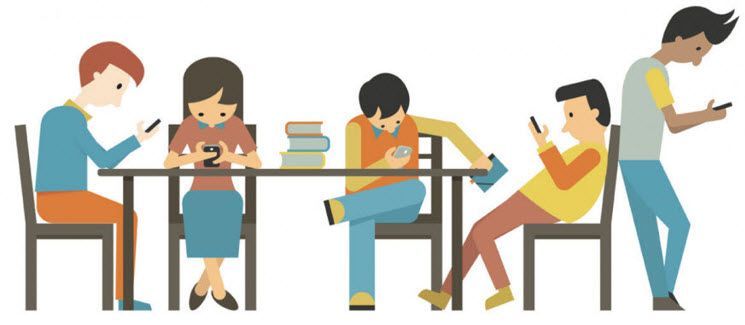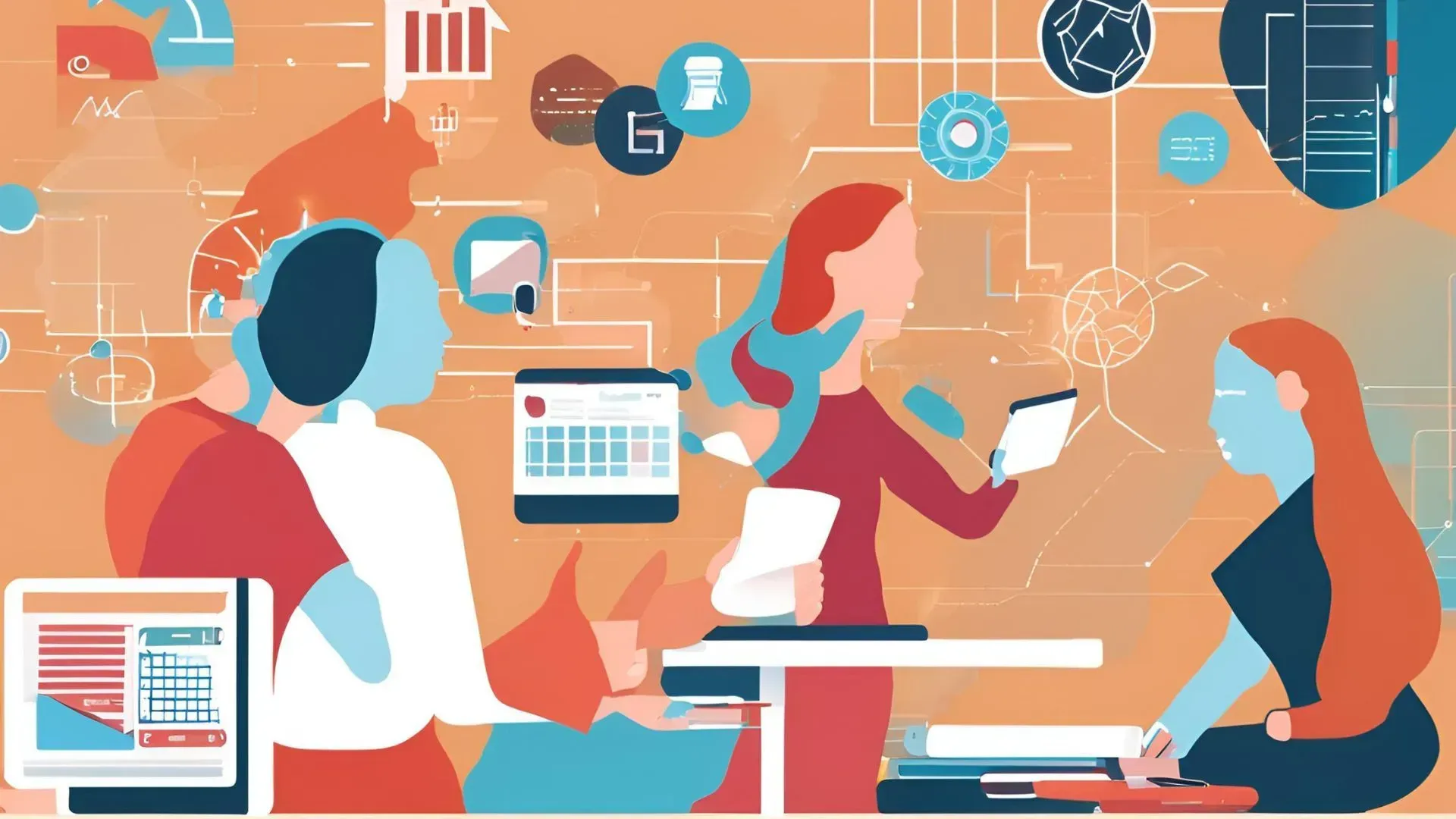
Technology changes how we live, sometimes in good ways and sometimes in bad. It helps us with health and connecting globally, but it can also cause problems like job loss and spreading false information.
Today, we'll talk about how technology affects our lives, both the good and the bad. We'll look at how it helps with things like healthcare and learning, but also the problems it can create, like cybersecurity issues and disagreements about what's right and wrong. We'll also look at what we can do to make sure technology benefits everyone and doesn't cause harm."

Positive Social Impacts of Technology
Technology has made our lives better in the following ways:
Health and Wellness
Medical technology has made people healthier and helped them live longer. It has found cures for serious diseases and made tools like prosthetics to help people move better. Telehealth lets people see doctors even if they live far away.
Global Connectivity
New ways of talking to each other have brought people all over the world closer together. Now, billions of people can get on the internet, which helps them learn, start businesses, and join in community activities. Social media lets people share their thoughts and work together for change.
Economic Opportunity
Buying and selling things online, along with new ways of handling money, have made it easier for everyone to get what they need and manage their money.
Online classes let people keep learning no matter where they are. Tools that help teams work together even if they're far apart are used in many different kinds of jobs.
Community Strength
Technology has made it easier for people to connect, which has led to good things happening in society. Video calls help families and friends who live far away stay close.
People can work together to support causes they care about through crowdfunding and asking for help from lots of people online.
Skilled Workforce
Learning about science, technology, engineering, and math (STEM) helps people learn how to solve problems in new ways. Knowing how to use computers and other digital tools lets people change jobs easily and work for themselves, like freelancers.

Negative Social Impacts of Technology
Even though technology has brought a lot of good things to society, it's also brought some problems.
Workforce Disruption
Automation eliminates many routine jobs faster than displaced workers can reskill, straining social support systems. Skills become outdated more quickly, increasing the need for lifelong learning support.
Stress and Disconnection
Being online all the time with our phones can make it hard to tell the difference between our personal and work lives, which can make us feel stressed out. It might also make us feel less close to the people we care about when we're not online.
Misinformation and Harm
Social media lets false information spread quickly, making it hard for people to talk about important issues and agree on what's true. Bullying and harassment online can make young people feel really bad about themselves.
Ethical Challenges
New technologies bring up big questions about what's right and fair, and even about what it means to be a person. Depending too much on computer programs to make decisions might make unfairness worse in the real world.
Concentrated Power and Control
Big technology companies are getting more control over what happens online and who gets to see what. It makes them very powerful, both in money and politics. There's still a big gap between people who can use new technology to get ahead and those who can't.
Cybersecurity Vulnerabilities
Because different systems are connected online, it's easier for hackers to cause big problems by attacking important things like power grids or hospitals. It's hard for rules and laws to keep up with how fast technology changes.
How to Address the Challenges of Technology?
The following approaches can help guide responsible development and usage:
Lifelong Learning
Programs that teach new skills help everyone keep up with changes in jobs. Lifelong learning means people can keep learning even after they've finished school. Having good support systems in place helps people who lose their jobs or need to change careers.
Regulation and Digital Infrastructure
Good rules help keep people's personal information safe and make sure everyone knows who's paying for political ads. Plus, they make sure people who work online have the same rights and benefits as other workers.
Media and Digital Literacy
Good education programs teach people of all ages how to use the internet safely and thoughtfully.
These programs also help people learn how to tell if information is true or not. Workshops in communities help people understand new technology and how to use it wisely.
Augmenting Rather Than Displacing
New technologies like artificial intelligence and smart systems can help fix some problems of being connected all the time.
They can make us work better without taking away our jobs. Also, using sensors and data helps keep things working smoothly without big problems.
Public-Private Partnerships
When people with technical know-how team up with those who care about making a difference, it brings different groups together. Together, they can work on making things better in areas like healthcare, education, and the environment.
Policymaking Through Consensus
People who make rules listen to what technology experts, workers, teachers, and regular people think about how technology affects everything.
The rules they make come from talking to lots of different people and thinking about how new ideas can help or hurt fairness, money, democracy, and people's rights.
Ongoing Research
Continued money put into basic research helps come up with new ideas that make life better. These ideas help create new technology, and businesses, and make life nicer for everyone. Places where different kinds of researchers work together and share ideas help solve problems in a good way.
Final Words
We need to think about how technology helps and hurts people. If we talk together, we can find good answers. The answers help technology help everyone the best. We all need to keep learning as tech changes fast. If we work as a team with kindness, and understanding each other, innovation can make life better for all. Even when tech changes quickly, together we can make sure it improves lives instead of causing problems.
Sources:
- https://www.ncbi.nlm.nih.gov/pmc/articles/PMC7366943/
- https://edubirdie.com/examples/the-role-of-technology-in-social-change/
- https://www.cliffsnotes.com/study-guides/sociology/social-change-and-movements/technology-and-social-change
- https://www.engagespark.com/blog/why-technology-innovation-is-the-key-to-driving-social-change/
Be informed. Stay updated.
Stay ahead with the
HermesHerald newsletter!
Immerse yourself in exclusive insights and crucial updates. Ensure you're always in the know!
Contact Us
Thank you for signing up to HermesHerald! We're excited to keep you updated with the latest insights and information. Stay tuned! 🌟
Please try again later.
Contact Us
Thank you for signing up to HermesHerald! We're excited to keep you updated with the latest insights and information. Stay tuned! 🌟
Please try again later.
Contact Us
Thank you for signing up to HermesHerald! We're excited to keep you updated with the latest insights and information. Stay tuned! 🌟
Please try again later.
With over 40 years combined experience, we conduct professional investigation and intelligence services for local and international clients in the public, private, and law enforcement sectors.
Website Privacy Policy & GDPR | Operational Policy
BROWSE WEBSITE
CONTACT INFO
Phone:
1800 889 713
Email: help@cyberlutions.com.au
Location:
Suite 88, 30 Denison St, Bondi Junction NSW 2022
Location:
Unit 4, 95 Main Rd, George Town TAS 7253
BUSINESS HOURS
- Mon - Fri
- -
- Sat - Sun
- Closed
With over 40 years combined experience, we conduct professional investigation and intelligence services for local and international clients in the public, private, and law enforcement sectors.
BROWSE WEBSITE
CONTACT INFO
Phone: 1800 889 713
Email: help@cyberlutions.com.au
Location: Suite 88, 30 Denison St, Bondi Junction NSW 2022
Location: Unit 4, 95 Main Rd, George Town TAS 7253
BUSINESS HOURS
- Mon - Fri
- -
- Sat - Sun
- Closed
Copyright CYBERLUTIONS, All Rights Reserved
Content, including images, displayed on this website is protected by copyright laws. Downloading, republication, retransmission or reproduction of content on this website is strictly prohibited. Website Privacy Policy & GDPR | Operational Policy | Cookie Policy








